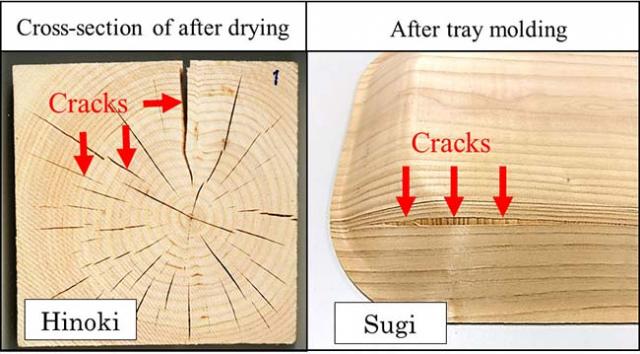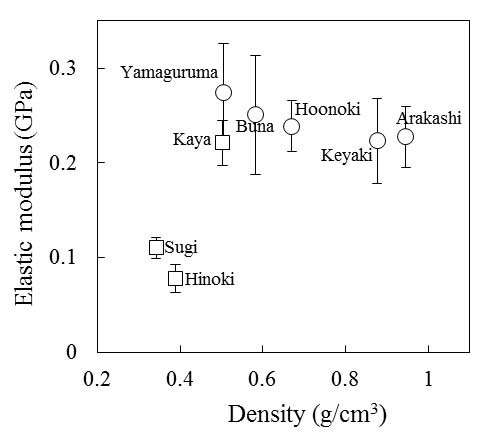Home > Research > Research Results > Research Results 2018 > Uniqueness among wood species observed via their mechanical properties in the lateral direction
Update:October 1, 2018
Main content starts here.
Uniqueness among wood species observed via their mechanical properties in the lateral direction
| Article title |
Effects of density and anatomical feature on mechanical properties of various wood species in lateral tension |
|---|---|
| Author (affiliation) |
Yuka Miyoshi (a), Keisuke Kojiro (b), Yuzo Furuta (b) (a) Department of Wood Properties and Processing, FFPRI, Tsukuba, Ibaraki, Japan. |
| Publication Journal |
Journal of Wood Science, 2018, DOI:10.1007/s10086-018-1730-z( External link ) |
| Content introduction |
The strength of wood in the lateral direction is considerably less than that in the longitudinal direction. Furthermore, as compared with reports concerning its strength in the longitudinal direction fewer studies about the strength of wood in the lateral direction have been reported as it is typically not used for applications that require heavy loads. However, cracks are generated during drying process, and those in the fibers form when wood is molded into three-dimensional shapes such as trays (Figure 1), which are related to strength with respect to the tension in the lateral direction; hence, investigating the mechanical properties of wood in the lateral direction is crucial. The knowledge of the mechanical properties in the lateral direction of wood can aid in resolving issues related to drying and processing sites. Therefore, to clarify the mechanical properties of wood in the lateral direction, the Young’s modulus, strength, and failure strain were measured for the 10 varieties of wood with different densities comprising various organizational structures. Typically, the mechanical properties in the longitudinal direction have been reported to be considerably affected by density; however, the mechanical properties in the lateral direction are not only controlled by the density but are also affected by the shape of the cells, the manner in which density changes from early wood to late wood, the distribution of vessels within the wood, and the orientation of ray tissues (Figure 2 shows an example for the results). Based on the knowledge obtained from the mechanical properties of various wood species in the lateral direction, a more advanced drying technology, deformation processing technology, and new utilization techniques for wood will be developed.
Figure 2:Results obtained from the tensile tests performed in the right-angle direction with respect to the annual rings (□ indicates soft woods, whereas ○ indicates hard woods.) The figure shows the mean values obtained from the tests performed in water at 25°C. A proportional relationship was not observed between density and Young’s modulus, indicating that the organizational structure of wood also affects the mechanical properties in the lateral direction. |
Copyright © Forest Research and Management Organization. All rights reserved.


